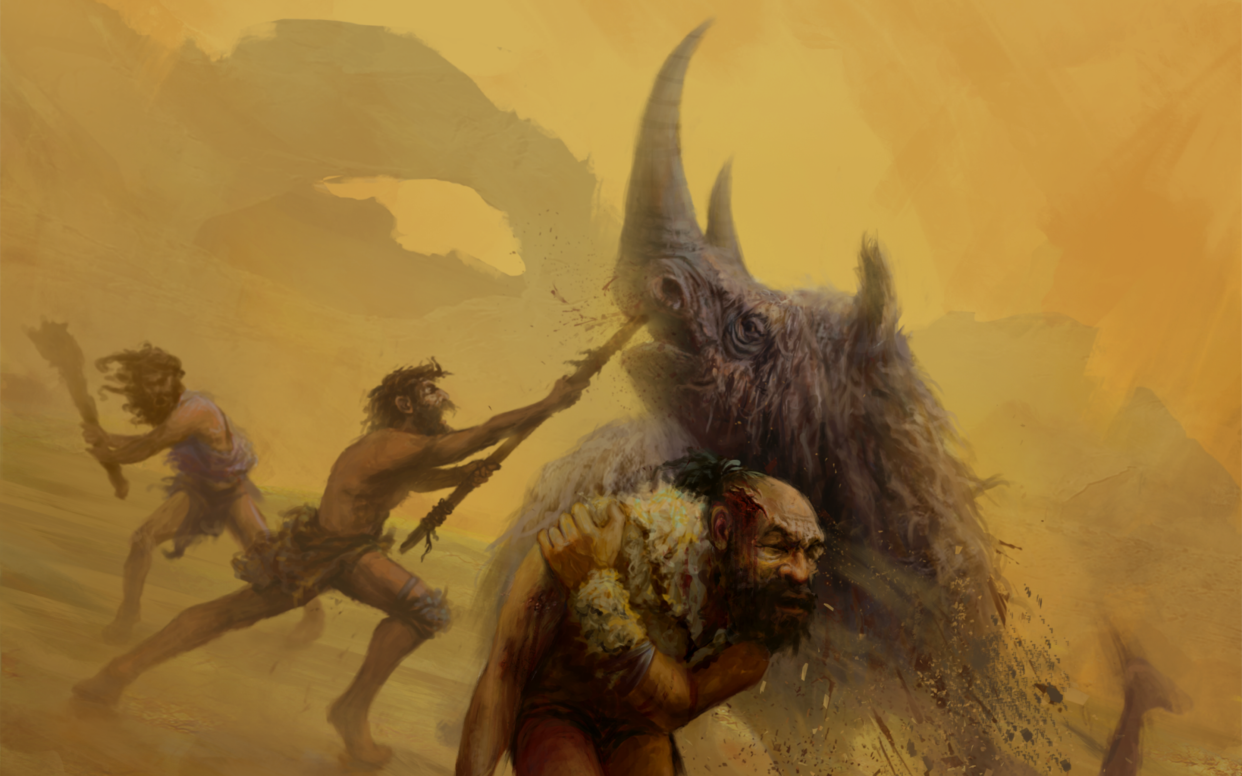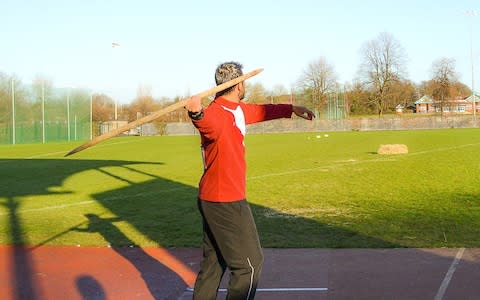Neanderthals had the brains to hunt with long-distance spears, archaeologists discover

Neanderthals had the intelligence to build and use hunting weapons that kept them at a safe distance from their prey, archaeologists have found.
The discovery was made after scientists at University College London made replicas of 300,000-year-old spears and trained javelin athletes to throw them.
They established that the weapons could hit a target at a range of 20 metres with easily enough force to kill a large animal.
The finding, published in the journal Scientific Reports, further rescues the reputation of the neanderthal from that of a brutish, unsophisticated early cousin to homo sapien.
It follows recent studies which suggested neanderthals lived as part of supportive social networks, were capable of art, and, contrary to the stereotype, stood up straighter than modern-day humans.
The replica handmade javelins were modeled on the Schonigen spears - the oldest complete set of weapons ever discovered - which were unearthed from an open-cast lignite mine in Germany in the 1990s, along with 16,000 animal bones.
Owen O'Donnell, a UCL alumnus, crafted the spears by hand from Norwegian spruce trees growing in Kent using metal tools.
Six javelin athletes were then recruited to see how far the spears could be thrown.
The results amazed the research team, as the weapons traveled approximately double the distance they were expected to. Dr Annemieke Milks, who led the study at UCL's Institute of Archaeology, said: "This study is important because it adds to a growing body of evidence that Neanderthals were technologically savvy and had the ability to hunt big game through a variety of hunting strategies, not just risky close encounters.

"It contributes to revised views of Neanderthals as our clever and capable cousins."
Neanderthals vanished from Europe around 40,000 years ago after co-existing with the ancestors of modern humans for several millennia.
It used to be thought that they were simply too stupid to compete with modern humans.
However recent finds have shown that Neanderthals were sophisticated tool and weapon makers.
A review of evidence published in November comparing the head injuries visible in neanderthal remains to those of humans established they were roughly equal, indicating neanderthals were no more violent and could hunt as skillfully.
For the new research, two replicas were used, weighing 760g and 800g, which conform to ethnographic records of Pleistocene-era wooden spears.
Dr Matt Pope, who co-authored the the paper, said: "The emergence of weaponry - technology designed to kill - is a critical but poorly established threshold in human evolution. We have forever relied on tools and have extended our capabilities through technical innovation.
"Understanding when we first developed the capabilities to kill at distance is therefore a dark, but important moment in our story."
He added: "Our study shows that distance hunting was likely within the repertoire of hunting strategies of Neanderthals, and that behavioural flexibility closely mirrors that of our own species. This is yet further evidence narrowing the gap between Neanderthals and modern humans."

 Yahoo News
Yahoo News 
